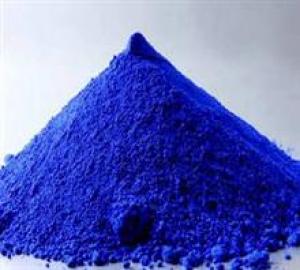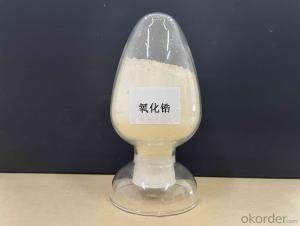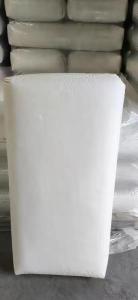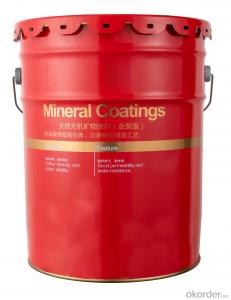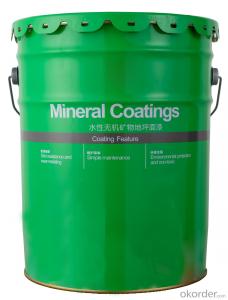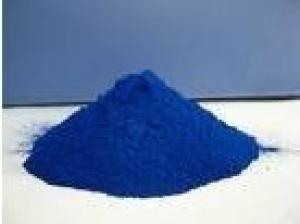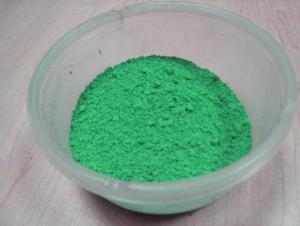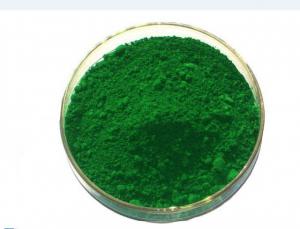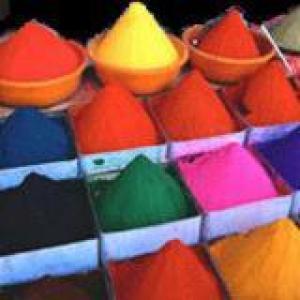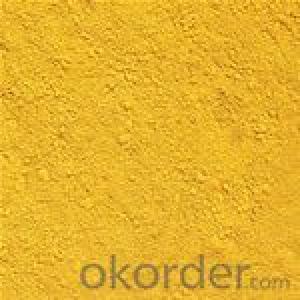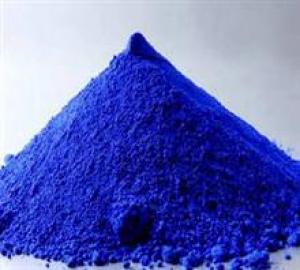Ultramarine Blue Color Blue 29:77007
- Loading Port:
- Shanghai Port
- Payment Terms:
- TT or LC
- Min Order Qty:
- 1 Metric Ton m.t.
- Supply Capability:
- 8000MT Per Year m.t./month
OKorder Service Pledge
OKorder Financial Service
You Might Also Like
Production Details Of Ultramarine Blue 462 :
Edition | 2012-07-29 | |
Product type | Blue Pigment | |
Product Form | Power | |
Chemotaxonomy | Na6Al4Si6S4O20 | |
Color Index | Color Blue 29:77007 | |
CAS No. | 57455-37-5 | |
Color Value&Tint Strength Refer Standard:DIN 55986 (1981) Use 1:2 Tio2 dilution and tinting strength parameter matching color value | ||
MIN | MAX | |
△L* | -0.7 | 0.7 |
△a* | -0.7 | 0.7 |
△b* | -0.7 | 0.7 |
△E*ab | 1.0 | |
Relative tinting strength [%] | 95 | 105 |
TDS Of Ultramarine Blue 462
MIN | MAX | TEST METHOD | |
Water solubles [%] | 1.5 | DIN EN ISO787 Part 3 (1995)
| |
Residue on sieve(0.045mm)[%] | 0.5 | DIN 53195 (1990) | |
PH Value | 7.5 | 10 | DIN EN ISO787 Part 9 (1995)
|
S [%] | 0.3 | DIN 55913 (1972) | |
105℃ volatile matter [%] | 1.0 | DIN ENISO 787 Part 2 (1995)
| |
Oil absorption [g/100g] | 25.0 | 45.0 | DIN EN ISO787 Part 5 (1995)
|
Packing of Ultramarine Blue :
25kg/ Kraft Bag , 20 MT/ 20 FCL or as your requirements .
Using Of Ultramarine Blue 462 :
whidely used in paint, ink, paper making, printing and dyeing textile, culture and education,
architecture, rubber, plastic, cosmetics, food and other industries and can be used as colorant,
brightener and color matching agent, etc.
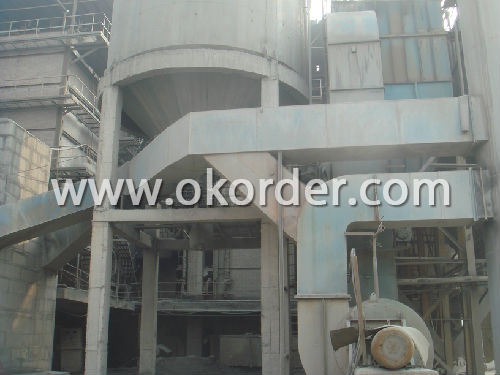
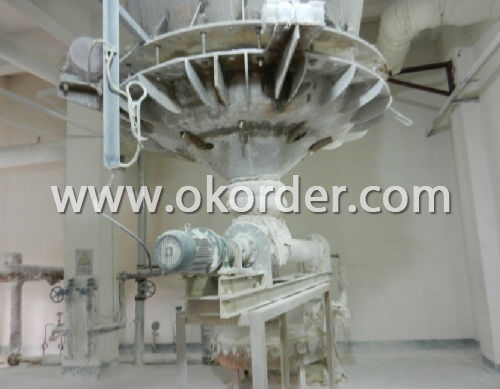

- Q:what are accessory pigments?
- Accessory pigments are light-absorbing compounds, found in photosynthetic organisms, that work in conjunction with chlorophyll a. They include other forms of this pigment, such as chlorophyll b in green algal and higher plant , while other algae may contain chlorophyll c or d. In addition, there are many non-chlorophyll accessory pigments, such as carotenoids or phycobiliproteins which also absorb light and transfer that light energy to photosystem chlorophyll. Some of these accessory pigments, particularly the carotenoids, also serve to absorb and dissipate excess light energy, or work as antioxidants. The different chlorophyll and non-chlorophyll pigments associated with the photosystems all have different absorption spectra, either because the spectra of the different chlorophyll pigments are modified by their local protein environment, or because the accessory pigments have intrinsic structural differences. The result is that, in vivo a composite absorption spectrum of all these pigments is broadened and flattened such that a wider range of visible and infrared radiation is absorbed by plants and algae. Most photosynthetic organisms do not absorb green light well, thus most remaining light under leaf canopies in forests or under water with abundant plankton is green, a spectral effect called the green window. Organisms such as some cyanobacteria and red algae contain accessory phycobiliproteins that absorb green light reaching these habitats. For more kindly click on the links below --- en.wikipedia.org/wiki/Accessory_p... en.wikipedia.org/wiki/Photosynthe...
- Q:why do plants need more than one pigment for light absorption?
- Pigments are molecules with an array of covalent bonds capable of absorbing a photon of light that has only a certain wavelength. The absorbed wavelength is only a fraction of the continuous range of wavelengths reaching the reaction center of a chloroplast. Each pigment species absorbs a different portion of the spectrum. So most photosynthesis works in combinations of pigments to absorb a across the visible spectrum and somewhat beyond. Some pigments (accessory photosynthesis carotenoid pigments) absorb useful wavelengths to pass the energy to chlorophyll A while the Xanthophyll Cycle pigments absorb potentially harmful high energy wavelengths for dissipation. Accessory pigments provide a range of spectra collection that allowed plants to adapt successfully to environments of differing light conditions. Pigments provide coloration to signal flower or fruit maturity to pollination partners or seed dispersal partners. Anthocyanins and carotenoids perform these communication functions. Phytochrome is a pigment that absorbs one wavelength only to toggle to another shape capable of absorbing at a different wavelength. Algae and plants both use this system to inform them of the time of year so they can synchronize with the best season in their habitat for reproduction efforts to succeed. Plants use phytochrome to regulate the photoperiod of flowering or seed germination.
- Q:i got some pigments off of ebay and i received two of them but they have a funny smell to them? are they supose to?
- Buying okorder /... Good luck dear! If all else fails, I suggest going on specktra and asking on there. It's a MAC and make-up community forum and they're extremely helpful and informative when it comes to anything MAC!
- Q:What are leaf Pigments?
- Pigments that are present in the leaf that impart colour to the leaf are called leaf pigments. They are chemical compounds. Green colour in plants is due to Chlorophyll. Cholorophyll are also of different types Chlorophyll-A, Chlorophyll-B, Chlorophyll-C and Chlorophyll-D. Different colours are imparted to plants by different pigments. Some are Xanthophyll and Carotenoids.
- Q:What is pigment?
- mac pigments are multi use. they're probably most popular as eyeshadows, but can also be used on lips, cheeks, nails, and pretty much anywhere. the mac pro store sells several mixing mediums, to change the consistancy of the powder, for the different uses, or they can be mixed with water/visine/etc.
- Q:is it the ink on regular printers?
- Some printers use only pigmented ink. Others use dye based and then some use a combination of both. Dye based ink is basically water based with a dye added to it. Pigmented ink has a solvent base with dye added. Pigment ink and dye based ink have both advantages and disadvantages. Dye based ink have better colors but pigment are more water and fade resistant. Dye based inks are therefore better for photos. I have a printer that has 4 dye based inks and a black pigment ink. Mine uses the dye based black and colours for pictures and the pigmented black is used for text. So the answer is yes. Pigmented ink is used in some regular printers.
- Q:Compare and contrast pigment color with the color seen from a light. What is the difference between mixing pigment colors and mixing light colors?
- you notice pigments the colour you notice them, using fact they replicate a spectra of sunshine, with particular frequencies, and take up all others seen to the human eye. in case you combine distinctive monochromatic mild with distinctive colours (as seen on the television: purple, green and blue it quite is referred to as additive mixing, or magenta, yellow and cyanide that's the different technique) your retina will upload the colors up, and experience it as a distinctive shade. (by skill of including each and all of the three colours on an identical intensity, you are able to create white mild) while mixing pigments (they are chemical compounds) you get a clean cloth, which will replicate an different spectra of sunshine, which you will see as a shade
- Q:My wife went to the eye doctor to get new glasses (because she couldn't renew her driver's license with her glasses she had been using), and the doctor said that she wasquot;losing pigment" in both of her eyes. He said not to worry, but he wants her to make an appointment every 6 months, instead of just once a year.What does it (her losing pigment in her eyes) mean? Is it really nothing to worry about?(My wife doesn't seem worried, she hates going to doctor's but she trusts them when she goes to them; she doesn't ask questions-- she feels that if she needed to know something the doctor would tell her.)
- I'm going thru the same thing, I have been to see my eye dr every 6 months to find out about pigment loss and I am losing my pigment at a fast rate 4 times worse than 6 mths ago. they are calling in the specialists about it, so YES worry!!!
- Q:thinking about the main role of pigments in photosynthesis...? explain how the pigments in colored objects suc?
- photosynthetic pigment or antenna pigment is a pigment that is present in chloroplasts or photosynthetic bacteria and captures the light energy necessary for photosynthesis. Green plants have five closely-related photosynthetic pigments (in order of increasing polarity): Carotene - an orange pigment Xanthophyll - a yellow pigment Chlorophyll a - a blue-green pigment Chlorophyll b - a yellow-green pigment Phaeophytin a[1] - a gray-brown pigment Phaeophytin b[1] - a yellow-brown pigment Chlorophyll a is the most common of the six, present in every plant that performs photosynthesis. The reason that there are so many pigments is that each absorbs light more efficiently in a different part of the spectrum. Chlorophyll a absorbs well at a wavelength of about 400-450 nm and at 650-700 nm; chlorophyll b at 450-500 nm and at 600-650 nm. Xanthophyll absorbs well at 400-530 nm. However, none of the pigments absorbs well in the green-yellow region, which is responsible for the abundant green we see in nature.
- Q:I always hear about pigments from MAC and Loreal, etc. and I am confused about what exactly they are.So can someone please THOROUGHLY explain what they are and what they can be used for?
- Pigment okorder Pigments can be used for many different cosmetic purposes. eyeshadow blushes added to a clear gloss you make a brand new lip gloss added to clear nail polish base. a hilight color, added to body spray for shimmer added to gel for a tinted gel the list goes on and on. i hope this helps!
1. Manufacturer Overview |
|
|---|---|
| Location | Hunan, China |
| Year Established | 1998 |
| Annual Output Value | Above US$ 30 Million |
| Main Markets | 20.00% North America 15.00% South America 15.00% Eastern Europe 10.00% Southeast Asia 10.00% Northern Europe 10.00% South Asia 10.00% Western Europe 5.00% Africa 5.00% Mid East |
| Company Certifications | ISO9001:2000; |
2. Manufacturer Certificates |
|
|---|---|
| a) Certification Name | |
| Range | |
| Reference | |
| Validity Period | |
3. Manufacturer Capability |
|
|---|---|
| a)Trade Capacity | |
| Nearest Port | Shanghai Port |
| Export Percentage | 41% - 50% |
| No.of Employees in Trade Department | 6-10 People |
| Language Spoken: | English; Chinese; |
| b)Factory Information | |
| Factory Size: | Above 10,000 square meters |
| No. of Production Lines | Above 10 |
| Contract Manufacturing | Design Service Offered; Buyer Label Offered |
| Product Price Range | High; Average |
Send your message to us
Ultramarine Blue Color Blue 29:77007
- Loading Port:
- Shanghai Port
- Payment Terms:
- TT or LC
- Min Order Qty:
- 1 Metric Ton m.t.
- Supply Capability:
- 8000MT Per Year m.t./month
OKorder Service Pledge
OKorder Financial Service
Similar products
New products
Hot products
Related keywords
